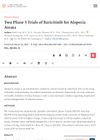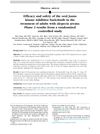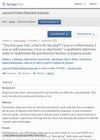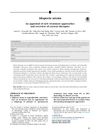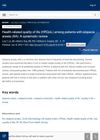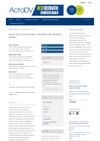Integrated Safety Analysis of Baricitinib in Adults With Severe Alopecia Areata From Two Randomized Clinical Trials
November 2022
in “
British journal of dermatology/British journal of dermatology, Supplement
”
baricitinib JAK1/JAK2 inhibitor alopecia areata BRAVE-AA1 BRAVE-AA2 treatment-emergent adverse events upper respiratory tract infection nasopharyngitis headache acne elevated blood creatine phosphokinase serious infections herpes zoster major adverse cardiovascular event pulmonary embolism malignancies nonmelanoma skin cancer gastrointestinal perforation JAK inhibitor AA TEAEs CPK shingles MACE PE skin cancer
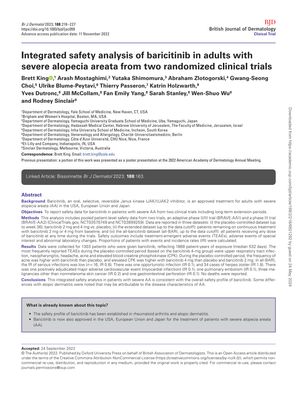
TLDR Baricitinib for severe alopecia areata is generally safe, with common side effects like infections and acne, and low rates of serious complications.
This document presents an integrated safety analysis of baricitinib, a JAK1/JAK2 inhibitor, in 1303 patients with severe alopecia areata (AA) from two clinical trials, BRAVE-AA1 and BRAVE-AA2, with a total exposure of 1868 patient-years (median 532 days). The analysis reports on treatment-emergent adverse events (TEAEs), adverse events of special interest, and abnormal laboratory changes across three datasets. The most common TEAEs were upper respiratory tract infection, nasopharyngitis, headache, acne, and elevated blood creatine phosphokinase (CPK). Acne and elevated CPK were more frequent with baricitinib compared to placebo. Serious infections were low (n = 16, incidence rate [IR] 0.8), with one opportunistic infection (IR 0.1), 34 cases of herpes zoster (IR 1.8), one major adverse cardiovascular event (IR 0.1), one pulmonary embolism (IR 0.1), three malignancies excluding nonmelanoma skin cancer (IR 0.2), and one gastrointestinal perforation (IR 0.1). No deaths were reported. The safety profile of baricitinib in severe AA patients is consistent with its known safety profile, with some differences potentially due to AA's disease characteristics.
